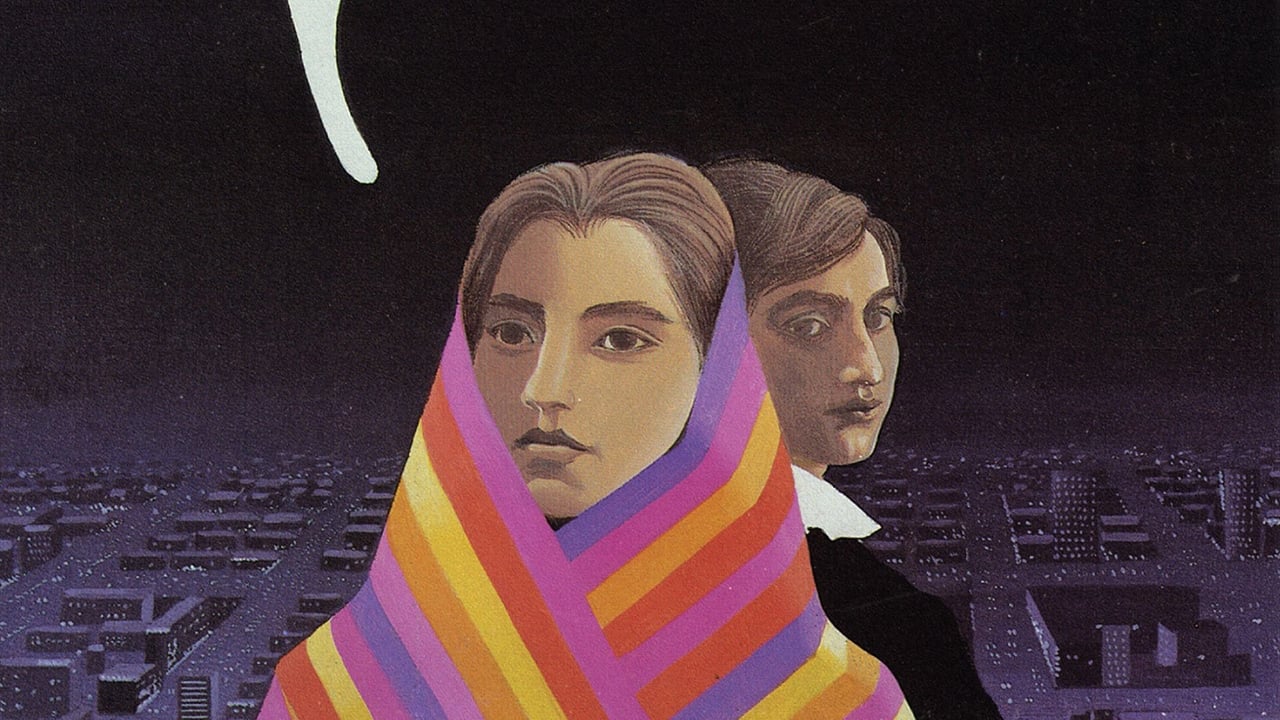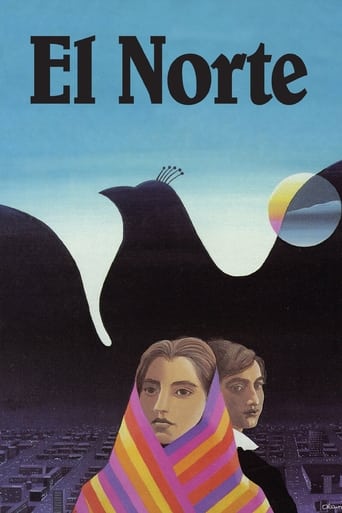

It’s fine. It's literally the definition of a fine movie. You’ve seen it before, you know every beat and outcome before the characters even do. Only question is how much escapism you’re looking for.
... View MoreTrue to its essence, the characters remain on the same line and manage to entertain the viewer, each highlighting their own distinctive qualities or touches.
... View MoreI enjoyed watching this film and would recommend other to give it a try , (as I am) but this movie, although enjoyable to watch due to the better than average acting fails to add anything new to its storyline that is all too familiar to these types of movies.
... View MoreThe film's masterful storytelling did its job. The message was clear. No need to overdo.
... View MoreIt's a good enough film. The cinematography and the soul of the script are what make the movie for me, though. They chose non-actors it seems for the film and I found it a bit distracting at times.Props to the focus of the story and that it doesn't all end with days of wine and roses, which makes me happy because I was greeted with as honest a film on the subject back in 1983. Not that it's not, but there are a few moments where I found myself saying, "Come on, really?" There are moments in the film where red herrings are thrown around (sequence where helicopter and them crawling through a rat-infested tunnel, is an example) and the editing can be a bit off with pacing. Other moments in the story where they are confronted with a difficult circumstances that hadn't brought themselves up until later in the story, and you're surprised that they haven't been confronted with up until that. In other words, conflict arises to serve the movie and the flow of the story; they show up to hit the beats that you expect for a movie to hit. The flow of the story can be a bit arbitrary at times, which when you notice, can be annoying.For me, the saving graces are the cinematography and the production design. The cinematography provides for a lot of beautiful imagery, with most of the film's images coming from the backdrop of Guatemala. The production design. I feel like the production design captures a lot of the culture and it establishes the world that they live in very well from the beginning of the movie. The image of the worker's feet as they move at the command of their foreman/boss as you see an alternation of naked feet and torn-up tennis shoes is pretty clever and it's this little account for details that make up the environment which I really liked about the film.The cinematography with the character's in Guatemala is beautiful to look at and made the film for me. I guess the middle of the film and the way certain conflicts arise struck me as contrived.The final sequence as Enrique makes it to his new job and reflects before the credits roll, was awesome and it made me reflect more positively on the film. So, yeah: watch it.
... View MoreIn the first part of this moving film, a macaw caws in Guatemala, signaling a treacherous act. In the last part, in the USA, a parrot squawks, signaling another betrayal. In Guatemala, a teen-aged Mayan girl washes clothes by hand and lays them out on the grass to dry out in the sun. Later she does the same task in the USA after being frustrated by a complicated washing machine's instructions. These are examples of the movie's effective repeated scenes. El Norte takes place during a difficult time in Guatemala – there is a civil war that will take the lives of 200,000 Indians.This motion picture is about two Mayan Indian teenagers – a brother and sister – who attempt to flee persecution in their native Guatemala to get to the promised land – "El Norte" (The North), the USA. Filmed with so much empathy for the two attractive teens, one wants to cheer for them to succeed somehow, even with the odds stacked against them. There are three main sections: I. Arturo Xuncax (Guatemala), II. El Coyote (Mexico), and III. El Norte (the USA). In Part I, life is pictured among native Indians in the colorful village of San Pedro. Families have dinner by candlelight; there is no electricity or plumbing. Each person has a different task. In the first scene, native Mayans from the village pick coffee beans under the watchful eye of an armed foreman. The foreman whips out his pistol and shoots into the air, signaling that the shift is over. Folks make some money but the hours are long and the work is backbreaking. Arturo and others in the village set up a secret meeting to form a protest, but he is treacherously betrayed and government troops surge into the village with the intention of killing any dissenters. Arturo Xuncax is among those killed; his head is hung from a tree. Later the troops return and take away Arturo's wife, Lupe (also to be liquidated). When Rosa, her daughter returns to their modest home, the place is inundated with white butterflies, signaling chaos (in Mayan folklore). After the loss of their parents and aware that their lives are in danger, Rosa and her brother Enrique decide to flee San Pedro and go to the USA via Mexico.In Part II the travails of the two Indian teens are manifested as they pretend to appear as Mexicans (who fiercely protect their border with Guatemala). "You have to learn to swear if you want to pass as Mexicans," they are told by a truck driver. Their naiveté and innocence are so obvious: Rosa and Enrique are devout Catholics and do not swear. But they are easy prey and fall under the spell of Mexican human smugglers ("coyotes"), who have dubious intentions. Bother and sister are caught by US customs agents, and are sent back across the border into Mexico. To pass as Mexicans instead of Guatemalans they had to fool the US customs agents by lying and swearing. One wishes that someone would have understood the situation and had advised them that they could have applied for USA citizenship as political dissenters through a customs process. Anyway Rosa, realizing that they will need to finance the border crossing, convinces Enrique that they will have to pawn her mother's valuable necklace (an heirloom that was made with gold and silver coin). After finally locating an "honest coyote," Rosa and Enrique make a harrowing escape under ground in an old drainage pipe/sewer (now blocked) that is infested with rats (undiseased laboratory rats were used for the scene).In Part III Rosa and Enrique are in the new land (Los Angeles). Monte, a Mexican-American who runs the aptly named Shady Acres Motel, shows them their new quarters, an absolutely disgusting and filthy motel apartment that at the least has electricity and plumbing. What a contrast to the simple but clean and colorful home that was left behind! Despite the difficult cultural and language barriers, the two protagonists remain undaunted and are determined to make the best of the circumstances. Every morning various vehicles pull into the motel parking lot to pick up illegal immigrants for assorted working assignments. Rosa gets a job as a stitcher in a clothing factory run by a Korean, and after a raid, changes work to be a home-keeper. She becomes friendly with Nacha, a nice Mexican woman, who knows a bit more about the new land. During lunch, Rosa notes that a busy LA street is packed with Mexicans, Central, and South Americans. "Where are the gringos," she asks. The answer, of course, is that they are in "their area" of the city. Meanwhile Enrique gets a very lucky break. He lands a decent position as a busboy in an upscale restaurant. His amiability and eagerness help him to move up the ladder. But Carlos, a Mexican-American employee who does not understand Spanish, is jealous and, as a "pocho," betrays him to the authorities. His parrot squawks. Enrique and a new friend barely escape a raid.Brother and sister clean up the apartment and take an evening course in English that is taught by a Japanese-American woman. While Rosa and Enrique have survived, and are not in danger of being killed for any political beliefs, they have no home and have no real support system. But Enrique has made such a good overall impression that Monte's American contacts have a great opening for him. In fact, he can obtain the ultimate prize, the green card, except that the opportunity lies in far away Chicago. Can Enrique really leave his sister alone? Soon Rosa is dying, both emotionally and of disease emanating from her previous contacts with the rats. In her hospital bed she whispers to her brother, "Enrique, we have no home." In the end there is Enrique, with "strong arms," digging a trench with a construction crew under the watchful eyes of a stern Mexican-American. He is now alone.
... View MoreTwo young and completely naive Guatemalan Indians are forced to flea their small village after their father is shot by government soldiers in a raid and their mother taken away.They make the trip north through Mexico to El Norte, the land of promise.This is a heartrending and unforgettable film, with occasional hilarity, of their journey and their life. Starting out simply you are soon completely drawn into their story, from the journey to their new life in San Diego as they attempt to adapt to El Norte, set in the larger context of the Latino and Mexican immigrant experience.I saw this film in its initial theatrical release in 1983, and a recent viewing reveals it has not dimmed. Its low budget origins are once or twice obvious, but are completely inconsequential for a film of this magnitude and quality.Nominated for the Best Screenplay in 1985. The first Oscar nomination for an independent film. Winner of numerous other awards. (And all this before Sundance and the plethora of festivals today.)Selected for inclusion in the National Film Registry, Library of Congress, 1995.The overwhelmingly superb reviews here and at amazon are no accident.(It's completely scandalous that a DVD has not been officially available here in the US since forever. However, you can purchase one based on the Australian DVD release at amazon or on ebay that will play on US machines. Just make sure it's designated region 1.)
... View MoreI was born in the Guatemala and to tell you the truth this movie has a lot of accurate information about the happenings in my native country. The movie tells you the story of a brother and sister and the awful reality of the trip they had to make to cross the southern border of the United States of America.The comment below mine says that the characters speak a "SOUTH American NATIVE LANGUAGE", but this information is incorrect (despite the fact that the person that wrote this comment apparently is educated enough, and gives classes in some university that i gladly do not attend to).Guatemala is part of Central America ... the territory that unites NORTH and SOUTH America. The language spoken by the characters has vocabulary from two Mayan languages: MAM & CAKCHIQUEL spoken by more than a million Guatemalans.Overall the movie is crude but a true statement of what illegal immigrants have to go through when they decide to make the trip to the USA. (This movie was shown in one of my human rights classes, it could be an accurate "source" of information that portraits reality without abusing it)
... View More